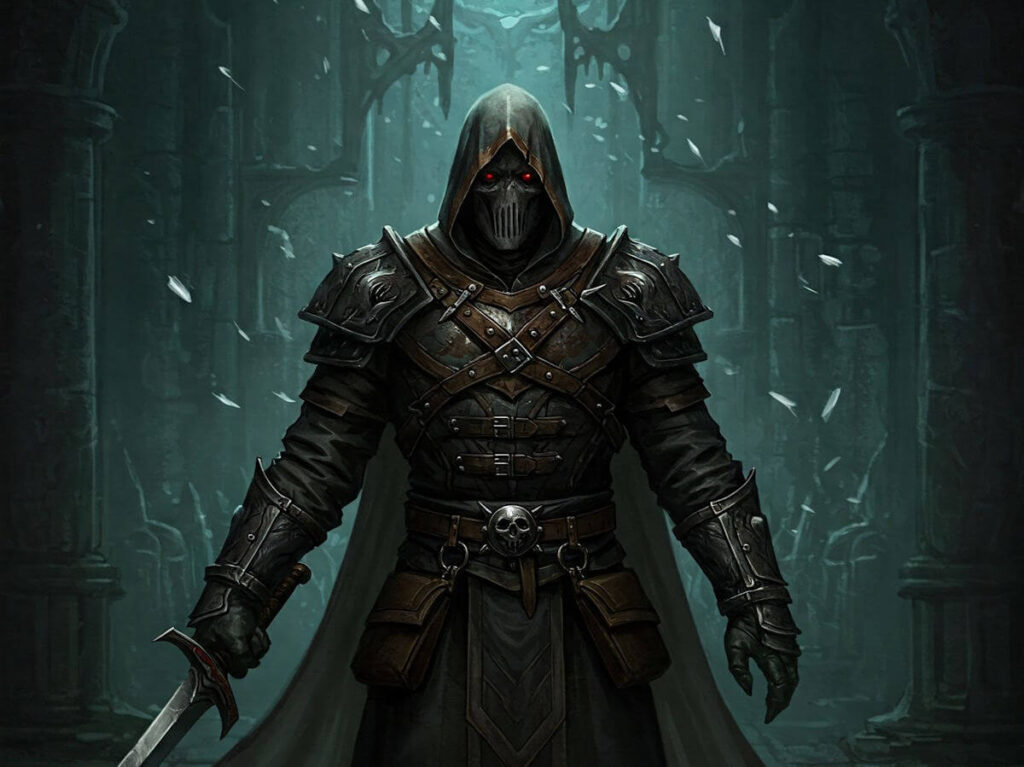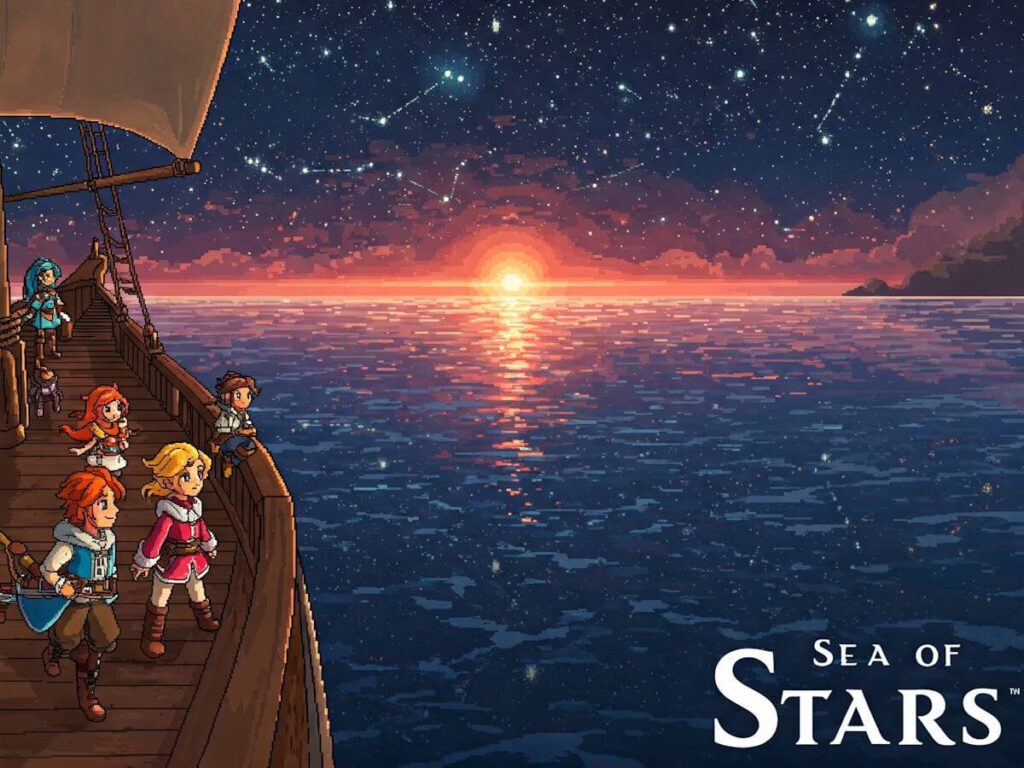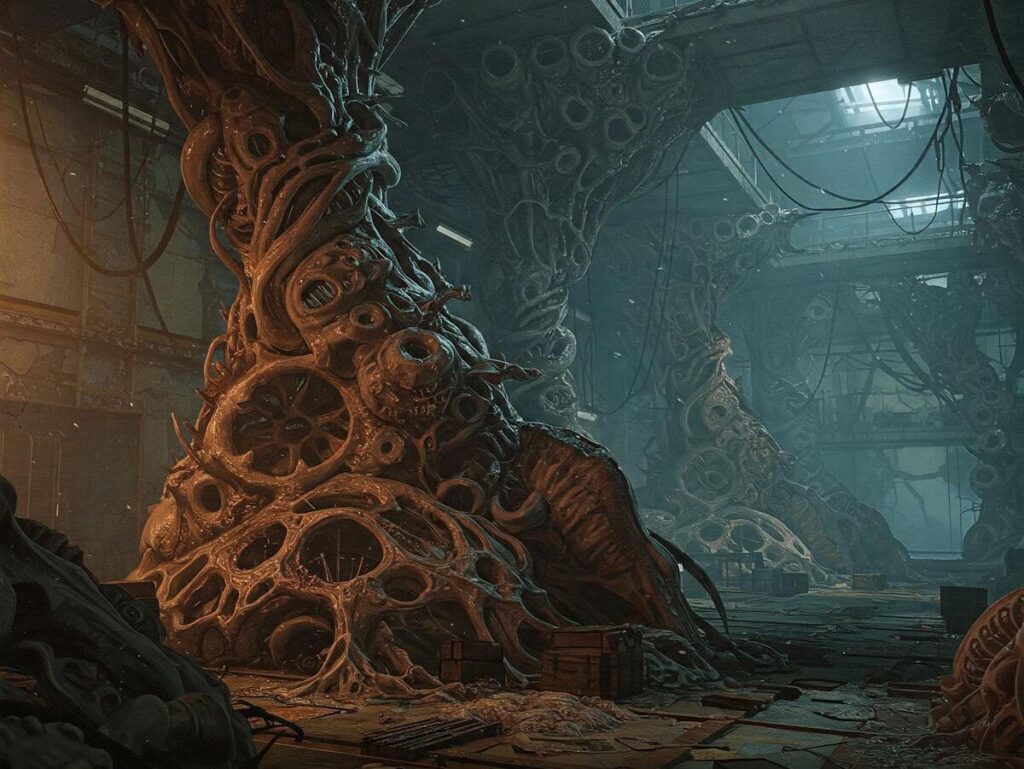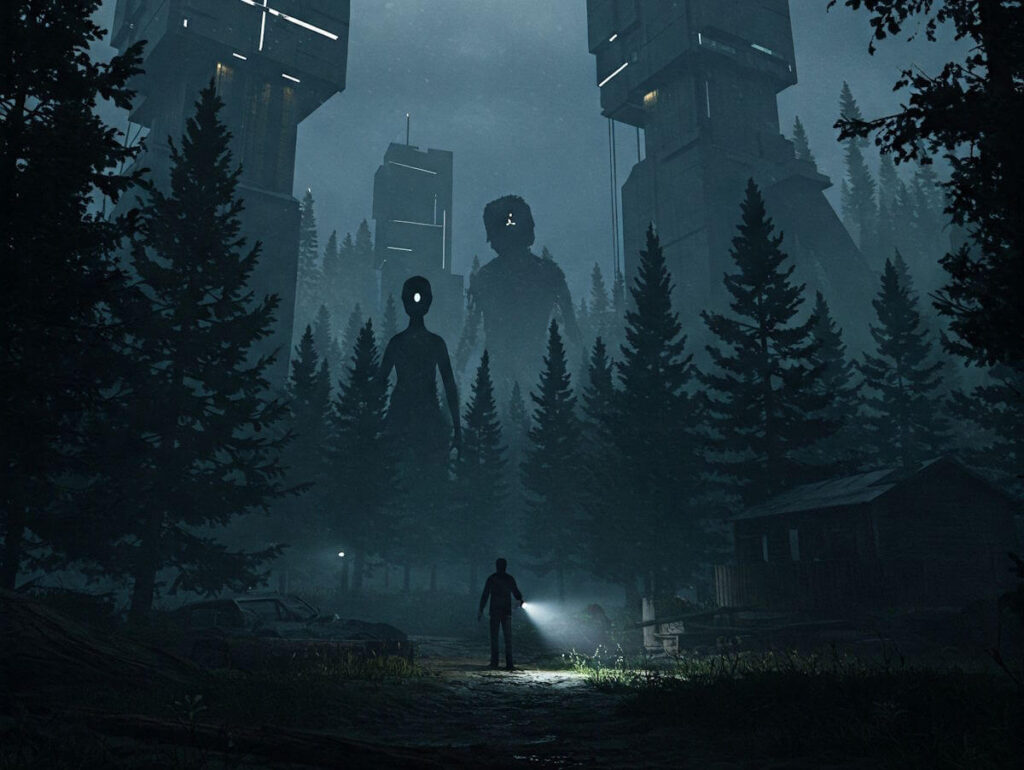Blasphemous II returns to the haunting and intricately designed world that has captivated players since the release of its predecessor. This sequel builds upon the established framework of its forerunner while furthering its ambition to depict a narrative steeped in complex lore, striking visuals, and inherent brutality. At its core, Blasphemous II promises to immerse players in a realm where faith and torment coexist, challenging both their skills and interpretations of morality.
The original Blasphemous left an indelible mark on the gaming community, blending traditional platforming with rich storytelling that drew heavily from religious and cultural themes. This unique approach allowed the game to resonate on deeper levels, as the narrative unfolded through meticulously crafted environments filled with symbolic meaning. Fans of the original have set high expectations for this sequel, anticipating a continuation of the captivating artistry and storytelling that defined the first installment.
In Blasphemous II, players can expect an expansion of the original’s meticulously crafted lore, with new characters and grotesque foes that echo the same thematic essence. The stunning art style retains a gothic aesthetic, showcasing detailed pixel art and atmospheric soundscapes, which amplify the emotional weight of each encounter. As players venture through the mysterious landscapes, they will engage in battles that not only test their reflexes but also require them to navigate the moral complexities tied to the characters and the choices they make.
This combination of intricate lore, arresting art, and merciless brutality sets the stage for a highly anticipated experience. Players are invited to delve into a narrative where every element interweaves with the others, creating an unforgettable journey. Blasphemous II is sure to expand upon the rich tapestry of its predecessor, challenging players to confront their own beliefs and perceptions within a world defined by both beauty and horror.
The Rich Lore of Blasphemous II
Blasphemous II presents a captivating narrative interwoven with themes of religion, guilt, and suffering, creating a richly layered experience for players. Set in a hauntingly beautiful, fictional world inspired by Spanish history and Catholic iconography, this game delves into the human condition, exploring the consequences of faith and transgression. The lore is seamlessly integrated into both the gameplay mechanics and the environment, encouraging players to engage deeply with its multifaceted story.
At the heart of Blasphemous II lies the concept of Penitence. The protagonist, known as The Penitent One, embodies this theme as he traverses a grotesque landscape filled with monuments to sorrow and devotion. The characters encountered along the journey, each distinct in their portrayal of faith and penitence, serve to amplify the central narrative. They are often shaped by guilt and their own suffering, which echoes the game’s exploration of religious zeal and the oftentimes harsh realities of life lived in devotion.
The lore unfolds organically, with each area revealing fragments of history and myth through both visual storytelling and environmental design. As players venture through deeply atmospheric landscapes laden with religious symbolism, they encounter altars, twisted statues, and relics reflecting the lore’s complexity. This design choice allows players to witness the manifestation of guilt and suffering, ultimately fostering a sense of immersion in a world that feels alive with dark narrative elements.
Moreover, players can uncover hidden stories and contextual clues by interacting with their surroundings, enhancing the overall depth of the experience. With every boss encountered and every location explored, the intricate lore of Blasphemous II unfolds with striking clarity, effectively ensuring that players are not merely observers but active participants in this heart-wrenching tale of faith and folly.
Artistic Direction and Visual Design
Blasphemous II presents a compelling visual narrative, meticulously crafted through hand-drawn graphics that evoke a sense of both horror and beauty. The game’s artistic direction is a testament to the skill of its artists, who have harnessed intricate designs to create a uniquely immersive environment. Each element is thoughtfully chiseled, embodying a style that seamlessly blends dark themes with intricate details, ensuring that players are constantly engaged with the world around them.
The color palette employed in Blasphemous II is equally significant in setting the tone. A mix of deep, somber hues interspersed with striking highlights creates a vivid contrast that draws players into its haunting atmosphere. This deliberate selection of colors not only enhances the visual experience but also reinforces the underlying themes of the game. The richness and variety of the visual presentation work in tandem to engage players on a deeper emotional level, evoking feelings of dread and awe simultaneously.
Moreover, the overall aesthetic can be seen as a reflection of the game’s lore, which is steeped in religious symbolism and gothic influences. The game’s visual identity channels elements of traditional Spanish art and architecture, while integrating motifs that speak to larger existential questions. This combination of influences contributes to a haunting yet beautiful backdrop that underscores the narrative journey of the player. As the protagonist navigates through this meticulously designed world, the artistry serves not only as mere decoration but as an integral part of storytelling, propelling the themes of conflict and redemption forward.
In sum, the artistic direction and visual design of Blasphemous II stand as a critical pillar of the game’s overall experience, intertwining unsettling imagery with a profound sense of beauty that leaves a lasting impression on its audience.
Gameplay Mechanics and Brutality
The gameplay mechanics in Blasphemous II revolve around a combination of challenging combat and intricate character abilities, promoting a sense of immersion within a disturbing yet compelling narrative. Players are thrust into a world that emphasizes brutality, making each encounter both relentless and deeply rewarding. Combat mechanics are primarily driven by the player’s choice of weapons, which range from traditional melee weapons to more unique and esoteric tools that embody the game’s themes of penance and suffering.
At the heart of the combat system lies a detailed parry and counter mechanic, rewarding players for mastering timing and precision. Successfully executing parries not only mitigates damage but can also lead to devastating counterattacks. This element amplifies the feeling of brutality inherent in Blasphemous II, as players are constantly pushed to rely on their reflexes and skill. Each enemy encounter represents a test of endurance, where players must navigate a landscape filled with grotesque adversaries, each with their own unique attack patterns and conceptual designs that evoke the themes of penance.
Character progression is another significant facet of the gameplay, as players can enhance their abilities through upgrades that cater to their play style. Unlocking new skills expands the tactical possibilities available during gameplay, allowing players to experiment with different strategies in combat. Weapon choice further shapes the player’s experience, linking directly to the themes of suffering and agony depicted throughout the game. The variety of elements available ensures that no two encounters feel entirely the same, which serves to maintain player engagement through emergent gameplay dynamics.
The interplay between character abilities, weapon choices, and the grueling nature of combat mechanics makes Blasphemous II not just a game about violence, but rather a profound exploration of suffering and redemption within an intricately designed world. As players master these mechanics, they will find themselves not only fighting for survival but also unraveling the layers of lore intertwined with every brutal confrontation.
Comparative Analysis with the Original Game
The sequel to Blasphemous adeptly builds upon the foundational elements established in the original game, while simultaneously introducing significant advancements in gameplay and narrative depth. The original Blasphemous was celebrated for its striking visuals, haunting atmosphere, and challenging mechanics. These core attributes remain intact in Blasphemous II, yet the developers have taken bold steps to enhance the overall experience.
One of the most notable changes in Blasphemous II is the expanded gameplay mechanics. While the original offered a rigid progression system and a somewhat linear map design, the sequel introduces a more intricate world where players can explore various interconnected locations. This design fosters a sense of discovery, allowing players to uncover hidden secrets and new abilities that enrich gameplay. Furthermore, the inclusion of dynamic combat mechanics offers a broader range of strategies for players, enabling them to engage with enemies in more diverse ways compared to the original.
The storytelling in Blasphemous II also marks a significant evolution from its predecessor. The narrative structure has been expanded to incorporate multiple subplots and character arcs, deepening the lore and enriching the player’s investment in the game world. Players are introduced to new characters that provide insight into the broader mythos, showcasing how the themes of faith, sacrifice, and redemption are woven throughout the narrative. By fleshing out these themes and providing players with more contextual depth, Blasphemous II establishes a compelling storyline that resonates with the original while offering something new.
In essence, the developers have managed to stay true to the spirit of Blasphemous while evolving its mechanics and narrative. This thoughtful balancing act ensures that both newcomers and returning players alike will find familiarity and novelty within the game’s expansive universe.
Cultural Influences and Inspirations
Blasphemous II is a game that resonates deeply with its cultural roots, drawing heavily from the rich tapestry of Spanish culture, religious iconography, and folklore. The game’s narrative and visual aesthetics are interwoven with elements that reflect historical and spiritual themes prevalent in Spanish heritage. The incorporation of such cultural influences is not only a testament to the creativity of its developers but also enriching for players who explore this vivid world.
One of the most striking aspects of Blasphemous II is its use of religious imagery, which can be observed in the game’s environments and character designs. The creators skillfully blend the fantastic and the macabre, evoking a profound sense of reverence and horror often found in Spanish religious art. For instance, the use of Baroque-style architecture and the incorporation of saints in twisted forms reflect the cultural significance of religion in Spain, particularly the Catholic tradition. This intricate layering of visuals and meaning enhances the narrative depth, allowing players to navigate a world steeped in irony and allegory.
The influence of folklore is equally significant in shaping the game’s storyline and character arcs. Many characters draw inspiration from various legends and tales passed down through generations, showcasing the diverse mythological elements of Spanish culture. Figures reminiscent of Spanish folklore imbue the game with a sense of familiarity that resonates with players. By weaving these cultural narratives into the fabric of Blasphemous II, the developers create a world where every element—from the enemies one confronts to the landscapes encountered—serves to craft a holistic narrative experience. This deep contextualization invites players to engage not just with the game as entertainment, but also as a reflection of a complex cultural narrative that speaks of identity, faith, and the human experience.
Fan Reactions and Community Engagement
The release of Blasphemous II has generated a noticeable buzz among the gaming community, eliciting a wide range of reactions from both dedicated fans and newcomers alike. Early feedback has showcased a prevailing sense of enthusiasm for the game’s deep lore and intricate art style, which pay homage to the Latin American culture and folklore. Players are drawn to the grim yet captivating aesthetics, which mirror the thematic elements present in the original game. As discussions unfold on forums and social media platforms, community members express their excitement and anticipation for evolving narratives within the sequel.
Additionally, players have keenly engaged in theorizing the deeper meanings behind plot points, characters, and gameplay mechanics. Such discussions have sparked interest in various interpretations, revealing the game’s layered storytelling. Fans often share their perspectives through fan art, video content, and collaborative endeavors that demonstrate their investment in the universe of Blasphemous II. This active participation underscores the importance of community engagement in contemporary gaming, where players not only consume content but also contribute creatively, adding to the collective experience.
The impact of fan engagement extends beyond mere discourse; it actively influences game developers as they monitor feedback and reactions from the community. Developers have consistently acknowledged the role that player perspectives play in shaping updates or expansions, recognizing that a thriving fan base can yield a network of support that fosters future developments. The recognition of this symbiotic relationship between creators and the audience marks a significant evolution in the gaming landscape, where community sentiment increasingly drives design choices and future narratives. Indeed, the momentum generated by early feedback serves to enhance player investment, creating a vibrant ecosystem where Blasphemous II can continue to flourish.
Future Prospects for the Franchise
The Blasphemous franchise has made significant strides since its inception, particularly with the release of its sequel. As the game continues to captivate audiences with its intricate lore, striking art style, and visceral gameplay, the future seems promising for potential expansions and developments. Players are eager to see how the narrative will evolve and whether the developers will introduce downloadable content (DLC) that expands upon the rich universe established in the current title.
One of the most compelling avenues for the franchise’s future lies in the continuation of its storyline. With several unresolved plot threads and a deep lore that invites exploration, there exists ample opportunity for narrative expansion. It is conceivable that future installments or DLCs could delve deeper into the backstories of various characters, introduce new areas, and expand upon the mythos of the game’s world. The sequel has already established a robust foundation, allowing for a seamless transition into new chapters of the story.
Moreover, the evolving gaming landscape and the increasing acceptance of indie titles in the mainstream market signal a ripe environment for the Blasphemous franchise to further its reach. As the series garners more attention, potential collaborations with other creators or expansions into different media, such as graphic novels or animated adaptations, could significantly enhance its visibility. This multifaceted approach would not only attract new fans but also enrich the storytelling experience for existing players.
In conclusion, the future of the Blasphemous franchise appears bright, characterized by possibilities for narrative growth and community engagement through expansions and innovative collaborations. The development team has the chance to harness the fervor generated by the sequel to explore fresh concepts while honoring the qualities that have defined the series so far.
Conclusion: The Intertwined Nature of Lore, Art, and Brutality
In conclusion, the intricate dynamics of lore, art, and brutality within Blasphemous II collectively create a unique and immersive experience for players. Each of these components plays a critical role in shaping the game’s atmosphere and narrative depth. The lore, rich in themes of redemption, guilt, and suffering, captivates players, drawing them into a narrative world that explores the human condition through a dark lens. This narrative foundation is firmly supported by the stunning art style that is emblematic of the game. The detailed character designs and haunting environments not only enchant players visually but also complement the storytelling, enhancing emotional engagement with the narrative’s themes.
Moreover, the brutal gameplay mechanics reflect the overarching theme of suffering found within the lore. Combat encounters, while challenging, resonate with the narrative, allowing players to physically embody the emotional struggles depicted in the game. The intertwining of these elements creates a cohesive gameplay experience that challenges players not only to navigate the game’s world but to confront its existential themes. Together, the art and brutality serve as a means of deepening the connection between the player and the lore, creating a multifaceted experience that rewards exploration and engagement.
As players delve deeply into Blasphemous II, they encounter a beautifully crafted world that is as visually striking as it is thought-provoking. Each exploration within its realms reveals layers of storytelling intricately woven with artistic expression and vicious combat, leaving a lasting impact. It invites players to embrace the dark beauty that the game offers, fostering an appreciation for the interconnected nature of its key components. As such, the experience is not just about overcoming adversities; it is an invitation to reflect on the broader themes of existence and the multifarious ways they manifest within this hauntingly beautiful world.





